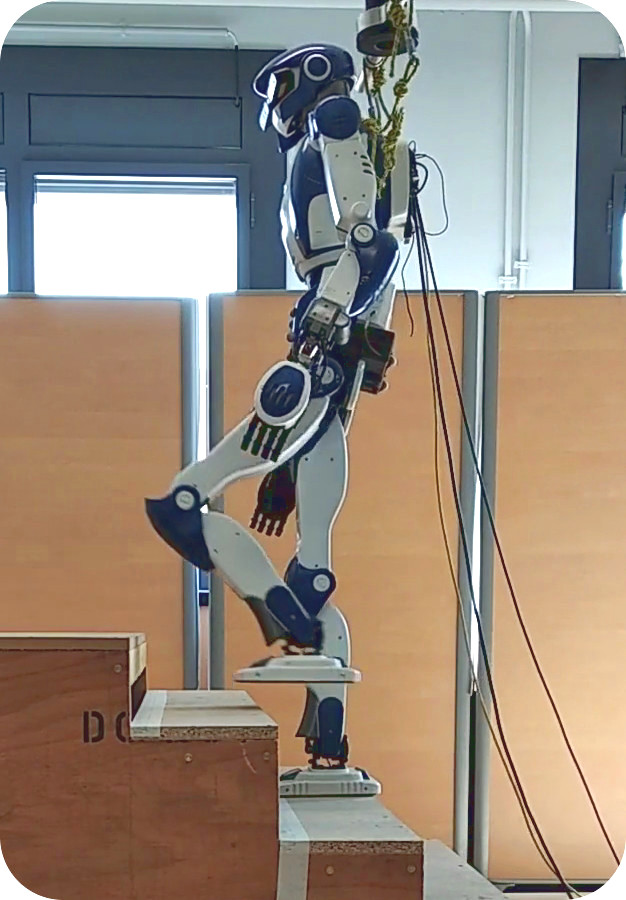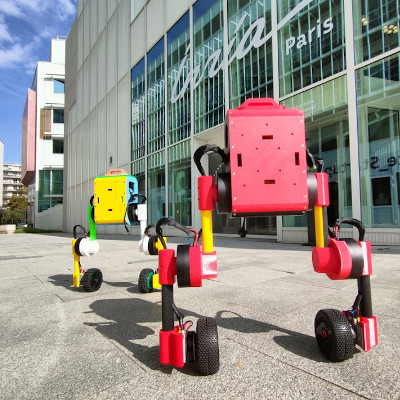
I'm Stéphane Caron, a robotics researcher at Inria Paris.
I'm interested in locomotion, which I have worked on with HRP-4 humanoids, ANYmal quadrupeds and Upkie wheeled bipeds. You can read the algorithms in my publications, or check out their code on GitHub. I also toot and share technical notes on this website.
Before joining Inria, I was a tenured researcher at CNRS and locomotion team lead at ANYbotics AG. And before that, I studied computer science at the École Normale Supérieure during my M.Sc. and robotics at the University of Tokyo during my Ph.D.
Robot locomotion

One way to develop robot behaviors in the lab is to aim for repeatable demos, but at some point this goal steers us away from generalizing to the real world. For instance, the LIPM walking controller I worked on for the HRP-4 humanoid could repeatedly achieve a relatively complex task like stair climbing, but it wouldn't know how to react to unscripted scenarios like banging its head on a ceiling. That was due in part to all its behaviors being implemented by control systems, each coming with its own set of parameters to tune, and the complexity of "keeping it all working together" increasing significantly with each new behavior. There are several ways we can explore to cross this complexity ceiling...

To experiment faster than on humanoids or quadrupeds, I love to prototype with Upkie wheeled biped robots. Their stack is fully open source, from the high-level Python software running on Raspberry Pi down to low-level firmware code running on moteus motor drivers. They can balance themselves by PID control, model predictive control or neural-network policies trained by reinforcement learning.
Open access
I support open access and was fortunate to be able to release most of my research as pre-prints and software that I can keep maintaining. On top of open access, two ways in which we could work better are overlay journals and maintaining post-prints.